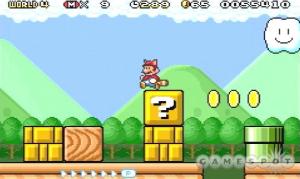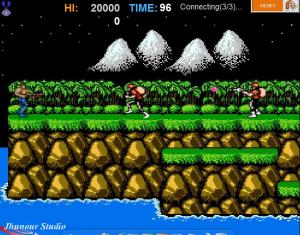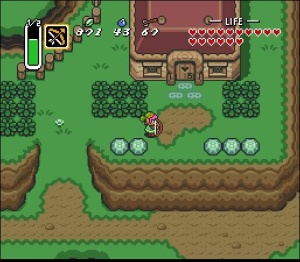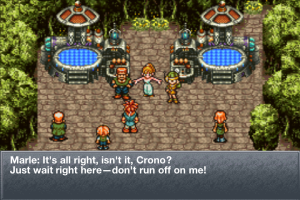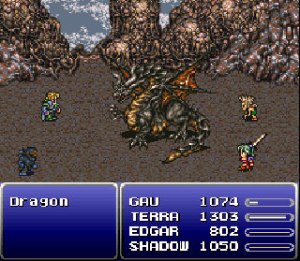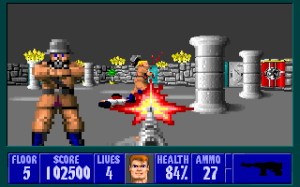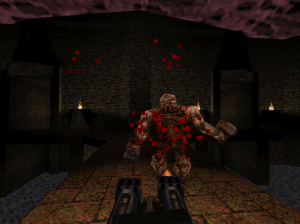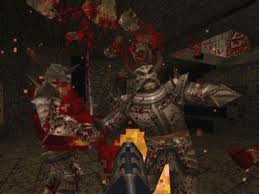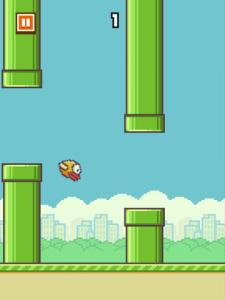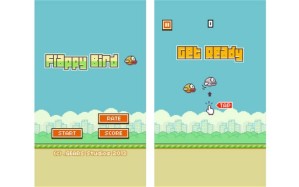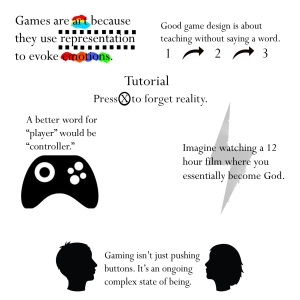Why has the FPS dominated gaming discourse? Some of the biggest names in the gaming business, Call of Duty, Battlefield, Halo, all of these have had incredible impact on game design and even the gaming business. Upcoming games including Titanfall, Bungie’s Destiny, and even the Thief reboot all feature this first person perspective as a primary feature and selling point. As some of you may know, it was not always like this. If we travel back in history to the 16-bit era, what we saw there was not the proliferation of shooters, but of adventure games that either had shooting involved as a combat mechanic, or games that didn’t feature shooting at all but were heavy on platforming or turn-based RPG systems.
To explore properly why the FPS has dominated gaming culture for years now, we need to go back into the past and understand what patterns were emerging and how the FPS contrasted to what was happening in gaming elsewhere.
Ancient History – Space
For a long time, there had been a constant back and forth in gaming between all sorts of different genres. Nintendo had for the most part, dominated its platforms with top quality adventure games and platformers. They sold well and for many people, it was an easy thing to pick up and play. Gaming was primarily about how game designers designed a physical space in their games, and how players navigated that physical space through their own mental space. It’s safe to say that platformers had been the default expression of space in games in the 8 bit and 16-bit era. Which is to say, the easiest way to express space in a game design sense, was to not only make space as a visual feature(platforms, skies, grass, pitholes, spikes) but that the visual style of your game was also its core gaming mechanic. In platformers, the visual expression of space is vital to your understanding of the game, as you learn what jumps you can make and when you have to make them.
This is where space and spacing matters the most. Judge how far you can jump!
The expansion of space became even more pronounced when games starting including maps, or either separate levels that had their own different qualities. Suddenly you could not only move from left to right, but up and down as well.
The only problem is that this space was externalised. As the player, you did not directly experience the space. Your only way to experience space was through the control of a character. Early game design had the majority of games feature a controllable character which you followed visually through the game’s level. This character had a certain appearance, abilities and personality. This opened up an interesting phenomenon in gamers that was to grow both players and game designers alike.
Gamer projection
16-bit era games saw the growth of characterisation in gaming. Characterisation is when you fictionalise the texture of your game to the point where your characters start gaining their own personalities. Characterisation allows empathy from the player. It lets players relate to what is happening on screen. What happened with the era of platformers and RPGs is that gamers related to the screen vicariously. They only related to their characters. The characters represented a part of the player, but never was the player involved directly in the experience of space. Players pressed buttons, but it was the characters who did the actions, not the player.
These are all characters that are external to your perceptive reality. You relate to them, and maybe they represent part of you, but in the end you are looking at something external to yourself.
We can call this phenomenon projection. All this means is that you as the player, are projecting your will and personality into what is happening on screen. But what is happening is that your projection of yourself is landing into a container that is represented by the character on screen. What this meant in ontological terms, is that there was a barrier between the experience of the player, and the expression of character and space. But for those players back in the 16-bit and 8-bit era who did not experience a whole FPS experience (they may have experienced the first person perspective, but not with the same richness that platformers were currently affording), they simply didn’t know any better. For many game players and designers, this externalised representation of space and character was all we had. That is of course, when the gates were blown wide open.
Early FPS
Id software have often been hailed as “the father of FPS.” While I think if id software didn’t do what they had done, someone else would’ve come along and done it anyway. But either way, what they did for their time was extraordinary.
The very first prerequisite of an FPS is 3D space. This doesn’t have to be strictly 3D. Id had found a way to draw 2D sprites onto a screen that would mimic 3D space. The keyword is that it mimicked 3D space and was not actually true 3D. What this proves is that in the earlier eras of gaming, the creation of FPS was largely restricted by technology. We’ll talk about technology later. First let’s have a look at Wolfenstein and Doom.
Your eyes. Your viewpoint. Your mental space.
This is a transformation of the experience of space. Instead of controlling a character, you are the character. You experience everything through his own eyes. When you turn or move the character, you no longer have an external character as a reference point for space, but rather your own spatial awareness. Through imagination, visualisation and memory, you navigate the space as if you were walking in it yourself.
What’s interesting is the decision game design wise to include the face of the character as part of the display of the game. Maybe the designers felt that simply having a gun on screen didn’t convey the feeling of the character enough, or that there wasn’t enough information. They threw this away later with Quake.
For its time, it was an incredible feeling. Maybe it was to do with my age, but I often felt scared while playing Wolfenstein and certainly while playing Doom. This is also another way of game designers taking advantage of form. If you think about first person perspective, although you can see in front of you more than ever before, your horizontal viewpoint is restricted. What was done with Wolfenstein, Doom and Quake was that the game had horror elements. The environments were extremely claustrophobic and enemies could be anywhere. Level design however, followed platformers where there were lifts, keycards, locked doors, and hidden pathways and rooms to find and explore. It often felt like you were navigating a maze whilst simultaneously killing enemies and trying to stay alive as much as possible.
The issue of Power
Glorification of violence? Is this what we have to do in order to feel powerful?
Quake in particular was pushing the boundries. It moved into true 3D, utilising polygons and true 3D environments. The game was gory like its predecessors but played with horror in a kind of gothic, industrial style. It makes sense initially. The FPS was of course, primarily about killing. Traditionally in games, killing was not really glorified. You simply made some non-human characters disappear in a cartoony, sterile way. Unless you’re shooting targets, FPS games default to killing. When you combine glorified killing with a first person perspective, suddenly power, and the feeling of being powerful becomes significant. These were contained in games before it, where power became commodified, we talk about “power ups” and the invincibility star in Mario are good examples. But in FPS games, power becomes an emotional issue ; a state of being in and of itself, either through the use of feeling powerful through violence (blood/dismemberment) or the use of feeling powerless (shooting a boss or being surrounded). The clever game designers knew how to juggle between these two states and effectively play tug of war with the player’s mental state. While the commodities of power in 3rd person games (power ups) are externalised (represented by a controlled character) , power in 1st person games trickles down into the gamer’s mental space much more immediately, much more potently. Every weapon is a power up in a way, and unless you ran out of ammo, you always had a way to directly impose your feeling of power onto the game. This produced a cathartic effect. We were able to enact brutal violence on these enemies and feel a sense of relief and empowerment for each enemy we disintegrated.
Cartharsis : The purification of emotions
The ontological relationship between player and game, between game and designer, and between player and game designer was still in its infancy. What we mostly see is an arcade style culture of instant gratification. Not only must the game be incredibly fast paced with heavy emphasis on violence, the player has to enjoy the physical sensation of pressing a button and having several layers of consequences to it. You press a button, your gun fires, you hit or miss, you have one less bullet, you must consider reloads, you must consider overall ammunition. All of these consequences happened with the press of one button. What was holding the FPS back from further evolution was technology. It wasn’t until we saw 3D shooters became widespread and when the hardware available matured that the game designers began to experiment and grow up their own way, taking the players along with them.
